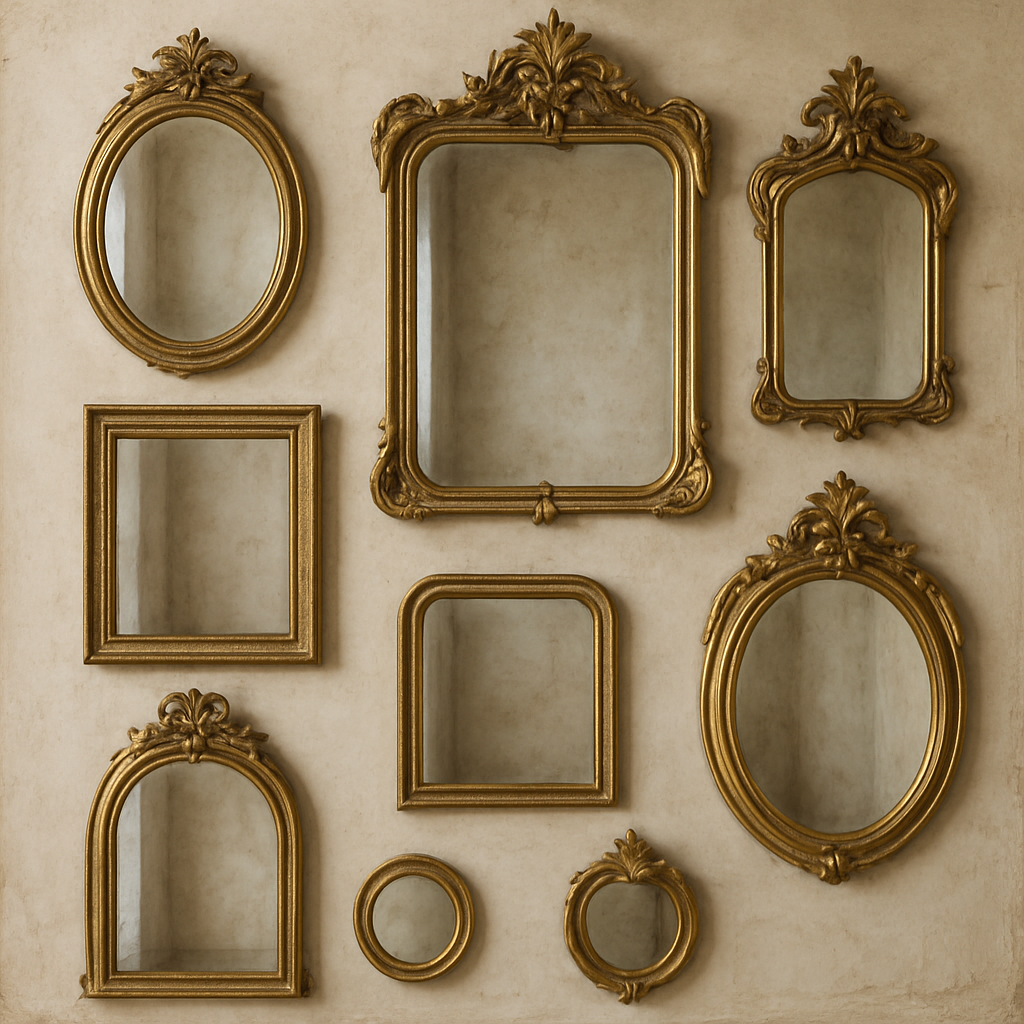When browsing antique stores, estate sales, or even your grandmother’s attic, you might stumble upon an old mirror with a timeworn frame and gently weathered glass. It’s natural to wonder: Is this old mirror actually worth anything? The answer is, in many cases, yes—but the value of a vintage or antique mirror depends on several key factors.
Whether you're a collector, reseller, or just someone fascinated by vintage décor, understanding what gives an old mirror its value can turn a casual find into a valuable treasure.
What Makes a Mirror “Old” or “Antique”?
Before we get into value, it helps to define what qualifies as an “old” mirror. In general:
-
Vintage refers to mirrors that are 20–100 years old.
-
Antique typically means the piece is over 100 years old.
Both vintage and antique mirrors can be valuable, depending on their craftsmanship, origin, and condition.
Factors That Determine the Value of Old Mirrors
1. Age and Historical Significance
Older isn’t always better, but age can increase value—especially if the mirror reflects a particular design period, like:
-
Victorian (1837–1901): Often ornate with carved wood or gilded frames.
-
Art Nouveau (1890–1910): Curved lines and floral motifs.
-
Art Deco (1920s–30s): Geometric patterns, chrome, and beveled edges.
-
Mid-Century Modern (1950s–70s): Clean lines, minimalism, and interesting shapes.
Mirrors from these eras can fetch a premium, especially if they’re well-preserved and reflect the style authentically.
2. Frame Materials and Craftsmanship
The frame often holds the majority of a mirror’s value. Hand-carved wooden frames, gold or silver leaf finishes, and high-quality joinery all contribute to a mirror’s worth.
Frames made of walnut, mahogany, or cherry wood are particularly desirable, as are those with gilded finishes or hand-painted details.
3. Glass Type and Condition
Old mirrors often have glass with imperfections—wavy surfaces, slight discoloration, or a patina known as “foxing” (those tiny specks and smudges that develop over time). While this might seem like damage, many collectors find it charming and authentic.
That said, cracks, chips, or heavily damaged reflective backing can significantly reduce a mirror’s value—unless the piece is extremely rare.
4. Maker and Origin
Mirrors made by well-known manufacturers or artisans—especially from Europe—are often more valuable. If the mirror was produced by a recognizable brand (such as LaBarge, Friedman Brothers, or Austrian Biedermeier-era makers), it’s more likely to command a higher price.
Mirrors with provenance (documentation of origin or previous ownership) are particularly appealing to serious collectors.
5. Size and Style
Larger mirrors, particularly full-length or floor mirrors, tend to be more valuable simply because they are rarer and make a greater design impact.
Unique styles—such as trumeau mirrors (which include a decorative panel above the glass), sunburst designs, or unusual shapes—also enhance value, especially if they fit well with popular interior design trends.
Examples of Valuable Old Mirrors
Here are some examples of old mirrors that are regularly appraised or sold for hundreds—or even thousands—of dollars:
-
Gilded French Rococo wall mirror (late 1700s): $2,000–$10,000 depending on condition.
-
Mid-Century Italian sunburst mirror: $500–$2,500.
-
Victorian walnut pier mirror: $800–$3,000.
-
Federal-style eagle mirror (early 1800s): $1,500–$5,000.
-
Art Deco etched glass vanity mirror: $300–$1,200.
Of course, pricing varies based on demand, location, and current design trends.
How to Tell If Your Old Mirror Is Valuable
Not sure what you have? Here are a few quick steps to get a rough estimate of your mirror’s worth:
-
Inspect the back for signs of age. Handmade nails, wood backing, and signs of oxidation can help indicate authenticity.
-
Look at the glass for waves or signs of aging (like silver loss). Older mirrors may have a slightly yellowed reflection.
-
Examine the frame for detailed craftsmanship, unique motifs, or markings.
-
Search for labels, stamps, or signatures that could point to the maker.
-
Consult an appraiser or visit a local antiques dealer for a professional opinion.
Should You Restore or Leave It As-Is?
Restoration can improve a mirror’s aesthetic—but proceed with caution. Over-restoring (especially removing patina or replacing old glass) can decrease value for serious collectors. If the mirror is meant for resale or investment, it’s often best to leave it in as original condition as possible.
However, if the goal is personal use and the damage is significant, tasteful restoration by a professional can be a smart move.
Selling or Keeping: What’s the Right Move?
If you're lucky enough to own a valuable old mirror, you may wonder whether to hold onto it or sell. Here are a few tips:
-
Sell if: You're not attached to it, it doesn’t fit your space, or the market is hot for that style.
-
Keep if: It has sentimental value, fits your home’s aesthetic, or is likely to appreciate in value.
Online marketplaces like Etsy or eBay, and specialized antique dealers are great places to research pricing or list a mirror for sale.
Final Thoughts: The Timeless Appeal of Old Mirrors
Old mirrors do far more than reflect light—they reflect history, craftsmanship, and timeless design. Whether you’re looking to invest, decorate, or simply appreciate their artistry, vintage and antique mirrors can absolutely be worth money.
And even if you don’t find a hidden fortune, the charm and character of an old mirror might just be priceless in the right space.
Looking to Buy or Sell a Vintage Mirror?
Browse our curated collection of authentic vintage mirrors—each one with its own story and soul. From gilded antiques to mid-century minimalism, we specialize in mirrors that elevate your space and spark conversation.


